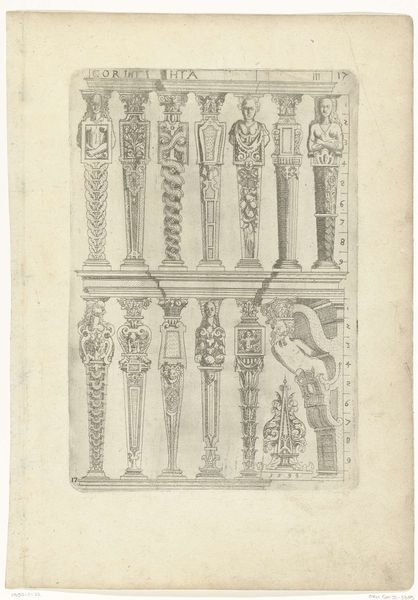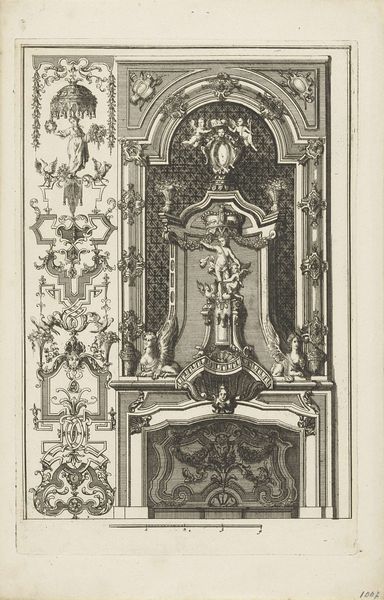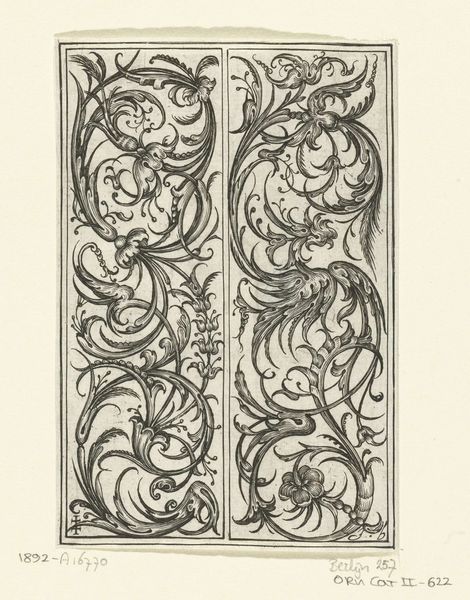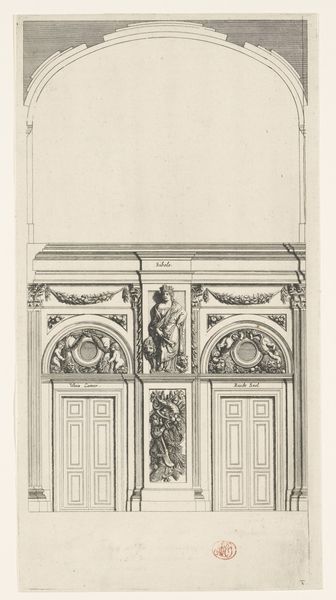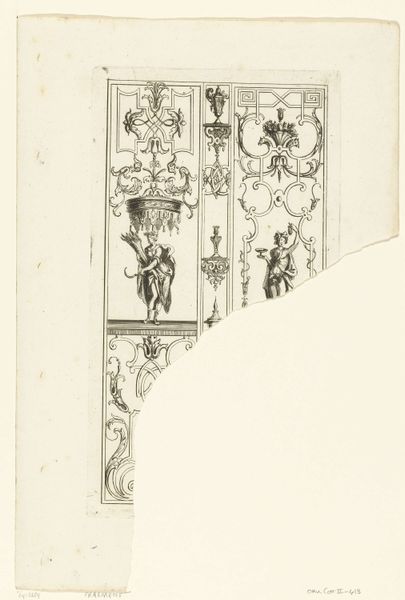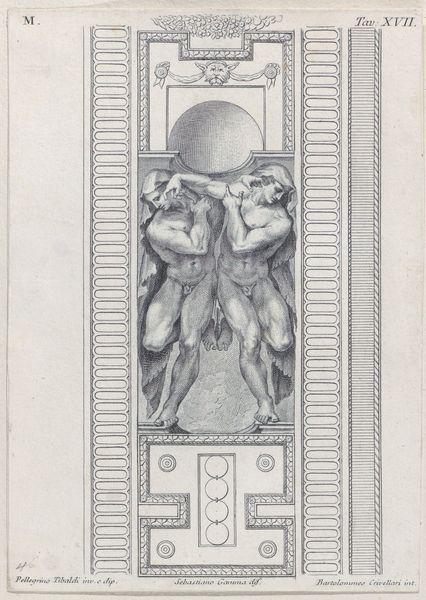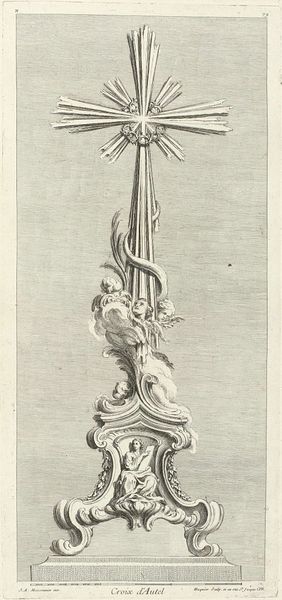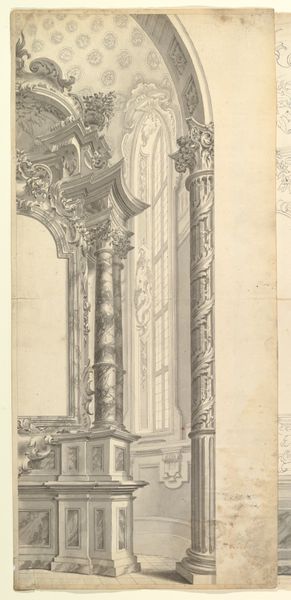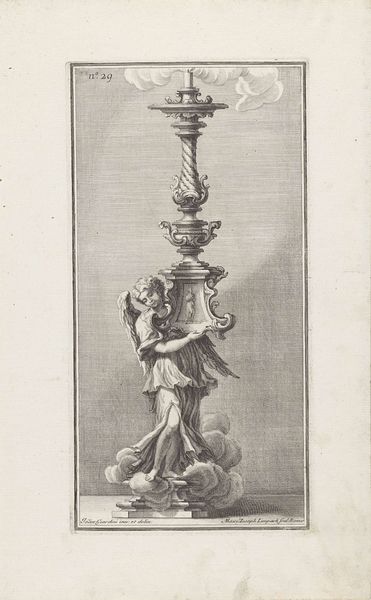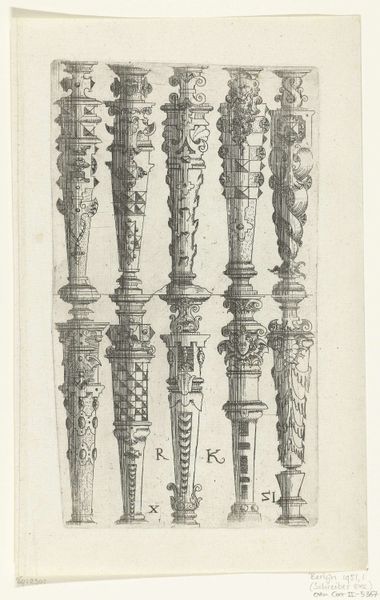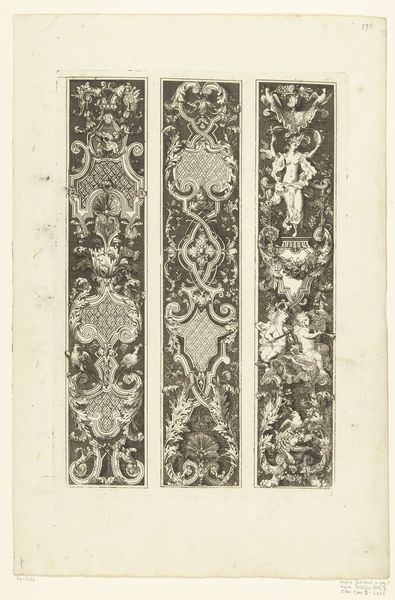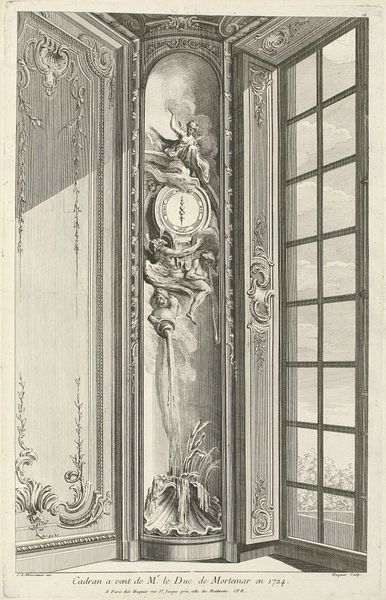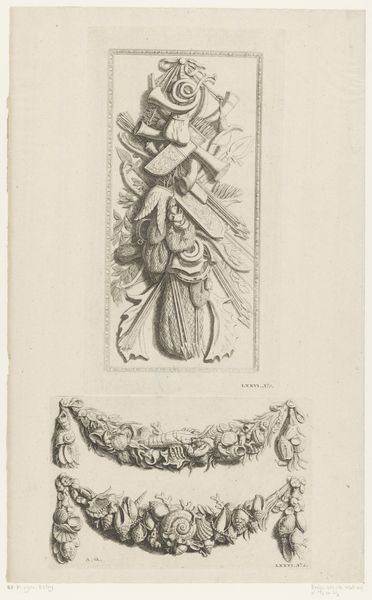
Twee delen van een pilaster met festoenen van bladeren, fruit en bloemen 1665
0:00
0:00
drawing, print, etching
#
drawing
#
baroque
# print
#
etching
#
etching
Dimensions: height 291 mm, width 125 mm
Copyright: Rijks Museum: Open Domain
Curator: Ah, here we have "Two parts of a pilaster with festoons of leaves, fruit, and flowers" by Hubert Quellinus, created in 1665. It’s a drawing and etching from the Rijksmuseum collection. Editor: My first thought? Sumptuous! There’s an almost overwhelming sense of abundance in the details. Like walking into a harvest festival designed by someone who *really* loves the Baroque. Curator: Exactly. Quellinus masterfully employs the visual vocabulary of the Baroque, drawing from its classical influences but twisting and exaggerating. Consider the linear rhythm and spatial balance. It's all about the inherent tension between realism and idealized ornamentation. Editor: The festoons give it that 'more is more' feel, but the texture is so crucial to making it believable. It feels like you could pluck a grape or touch a feather. All this richness, and rendered just in etching and drawing – can you imagine how incredible they looked when etched or painted? Curator: Yes! And there's more than decoration happening here; look at the use of each panel and its compositional intention. You’ll find what appear to be a bird juxtaposed with vegetation—there is undoubtedly an engagement of the senses designed to heighten awareness of space through symbolic motifs. Editor: Symbolism, okay... but the placement of the bird! Tucked so carefully amongst the blooms gives him that regal vibe - that creature isn't *in* nature, it's lord of all nature, which I suppose works as intended for a decorative piece? Also, the attention given to details, for example, each grape is its own circle adding complexity without obscuring shapes! Curator: A perfect observation. He really does command authority within the composition. I think the contrast between this control of details, on the one hand, and this sense of lush overgrowth, on the other, reveals what Baroque at its best achieved. Editor: So we start with structure, add loads of sensual flourish, and—voilà! It’s a Baroque banquet! I must say, the depth of detailing Quellinus created is captivating; that the artist can achieve so much in what seems simple black lines gives us the sensation of light bouncing from the actual pilaster surfaces—what incredible depth! Curator: Indeed. A brilliant encapsulation of the Baroque. Next up we have...
Comments
No comments
Be the first to comment and join the conversation on the ultimate creative platform.
